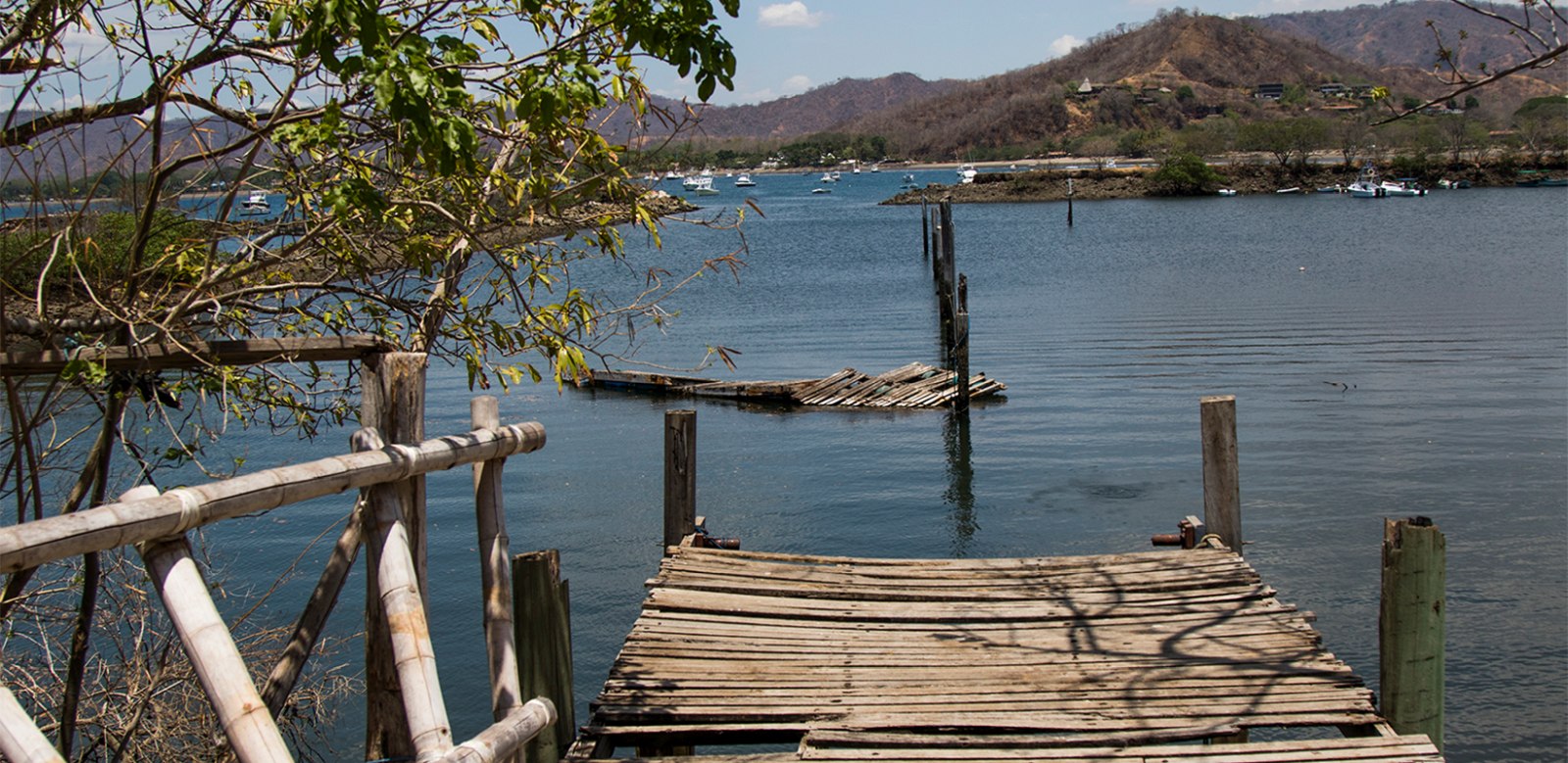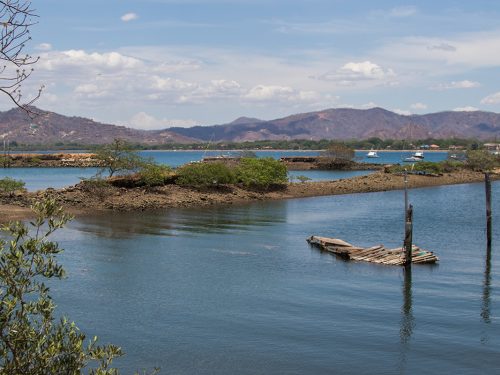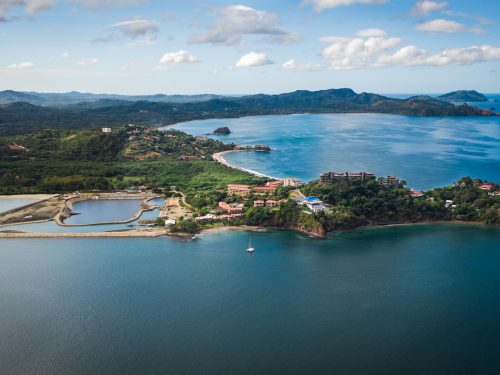
Construction of the Flamingo Marina has begun. Dredging and dump trucks along the beach are evidence that work is underway.
The work is part of phase 1 of the marina, which includes building 140 docking points and a building with apartments and commercial space. Phase 1 is scheduled to conclude at the end of 2021.
The project could attract hundreds of tourists, but that will depend on how efficient the city is in solving the problems in the area in places like Flamingo, Potrero and Brasilito.
Road infrastructure is the first of those problems. Getting to the marina means crossing bridges without rails or are only one lane, or taking the only alternative route which is full of holes and impossible to use during rainy season.
Everyone agrees on this, including city representatives, development associations, developers and even the mayor. And it isn’t coincidence. It’s a problem the canton and communities have been facing for decades and requires attention from the city and central governments with or without a marina.
Scott Cutter, sales manager for Pez Vela Marina in Quepos, Puntarenas, says tourists will dock their boats, but won’t stay on them. They’ll walk along the beach, eat and stay at the hotels. “If the streets, parks and roads are chaos, eventually boats will leave.”
Cutter is speaking from experience. Pez Vela is Costa Rica’s largest marina and it has been operating for nine years. In addition to infrastructure improvements, Flamingo will need qualified, bilingual personnel.
Let’s Start with the Streets
The bridge at the entrance to Brasilito is one lane. It’s common, especially during holidays and festivals, to see lines of dozens of cars on each side, waiting to cross.
It’s a mess on normal days, imagine with the marina,” said representative Jorge Leal during a city council meeting.
In order to reach Flamingo and Potrero via the main access road, crossing it is necessary. It’s located exactly where the new project will be built.
Santa Cruz mayor María Rosa López said “fortunately” they already have a solution for expanding the bridge and “settling a debt with the community.”
In March 2020, works will begin to replace the old bridge with a new, two-lane bridge thanks to an agreement between the Playa Brasilito Comprehensive Development Association, Inder, Conavi, MOPT, the City of Santa Cruz and the Presidency of the Republic.
It will be a $1.3 million investment and funds will come from all the different institutions that signed the deal. The city of Santa Cruz will contribute $185,000 of the total.
López said that while they are building the bridge, all vehicles traveling the route must detour to “La borrachera,” which runs parallel to the current road.
But other works needed don’t have the same luck as the Brasilito bridge, such as the bridge located 1.5 kilometers from the main entrance to Potrero along national highway 911.
The bridge collapsed in October when holes wider than the tires of a small car opened up in it. It was repaired, but only partially.
“That is an urgent project, but they’ve abandoned us. Santa Cruz needs a team of people working with Conavi and MOPT because it seems neither knows what the other is doing,” said Lindsey Cantillo, president of the Surfside association in Potrero.
Another bridge requiring attention is at the entrance to Flamingo. It is one lane, which makes it hard for it to handle the area’s high traffic load.
In this case, the mayor was emphatic in that they are aware of the need to intervene in both bridges, but they haven’t yet been able to include the jobs in city budgets.
The other problem is that the alternative route connecting Tempate and Potrero is a gravel road and is impossible for small cars to use during the rainy season.
In optimal conditions, this road would provide another way to access the marina in addition to the main road.
There’s a proposal to improve it, but nothing set in stone. We have to think about making these roads usable, not just because of the marina but also because we face natural disasters. But I hope the marina is the excuse,” said representative Arcadio Carrera.
The company that holds the concession, Marina Flamingo Development Group, doesn’t have a plan or agreement for improving infrastructure beyond building the marina itself, according to legal representative Max Arata.
Arata said the company is required to pay construction permits and taxes on the concession to the city, which, over the last year, totaled $20,000.
“It’s very important that the city use the budgeted funds satisfactorily each year. We can’t let them run a surplus with it,” Arata said.
The mayor said the city is free to spend the money as they see fit and the funds can be reinvested in towns near the marina as well as in other parts of the canton.
More Jobs
Besides roads, training qualified personnel is another pending task. “We want the jobs created by the marina to go to Guanacastecans,” said representative Omar Cruz.
To make that happen, developers and the city established an alliance with the National Learning Institute (INA) to train workers in jobs specific to the marina, like gasoline dispensers or even more conventional jobs in areas like human resources and tourism. None of these plans have been developed yet.
“At the end of the day, what you need is for the community fo feel proud of the marina and understand the project isn’t just for boat owners,” Cutter said.







Comments